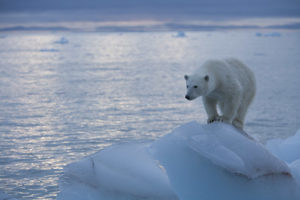The five signatories of the Polar Bear Agreement will meet for the first time since signing the treaty in 1973 to discuss how to save the polar bear. Representatives from Canada, Denmark/Greenland, Norway, Russia, and the U.S. will attend the The International Meeting Under the Polar Bear Agreement in Trosmø, Norway, beginning today.
When the five countries signed the treaty 26 years ago, the only threat to polar bears was hunting. The killing of polar bears is still allowed in all of the signatory countries except for Norway and is mostly carried out by Inuit natives. Approximately 700 polar bears, or 3% of the population, is “harvested” every year – an amount the World Wildlife Foundation calls “unsustainable.” Inuits counter that hunting constitutes a vital part of their economy and that the entire bear is used except for the liver, meaning that there is little unnecessary waste.

© Erik Malm.
Even considering the threat posed by hunters, however, the biggest issue on the agenda will of course be global warming.
The World Wildlife Fund’s Direct of Species Conservation Peter Ewins noted that if the world does not deal with climate change, “at least 2/3 of the world’s polar bears will vanish by 2030.” The melting sea ice is the primary cause behind the drop in six of the world’s nineteen polar bear populations, since without ice floes, the bears have no hunting platforms. Ewins added that saving one of the world’s most beloved animals will require “very strong leadership from current governments in the global climate change negotiations.” (Full comment here)
Experts have noted that the most important part of the treaty is:
“Each Contracting Party shall take appropriate action to protect the ecosystems of which polar bears are a part … and shall manage polar bear populations in accordance with sound conservation practices based on the best available scientific data.”
At least on paper, then, the treaty legally obliges the signatories to develop a strategy to save the polar bear. The WWF wants the five countries, along with the rest of the world, to take polar bears into account when considering oil and gas development in the Arctic as well.
Links to other news articles: The Toronto Star, The Independent, Direktorate for Naturforvaltning (Norwegian)